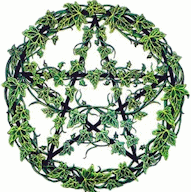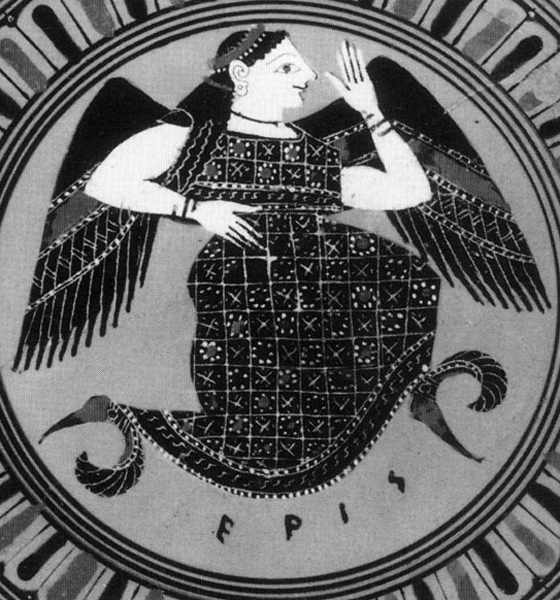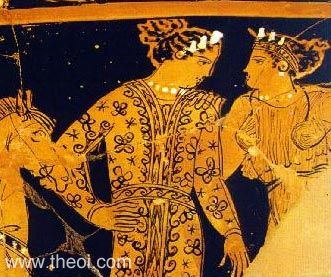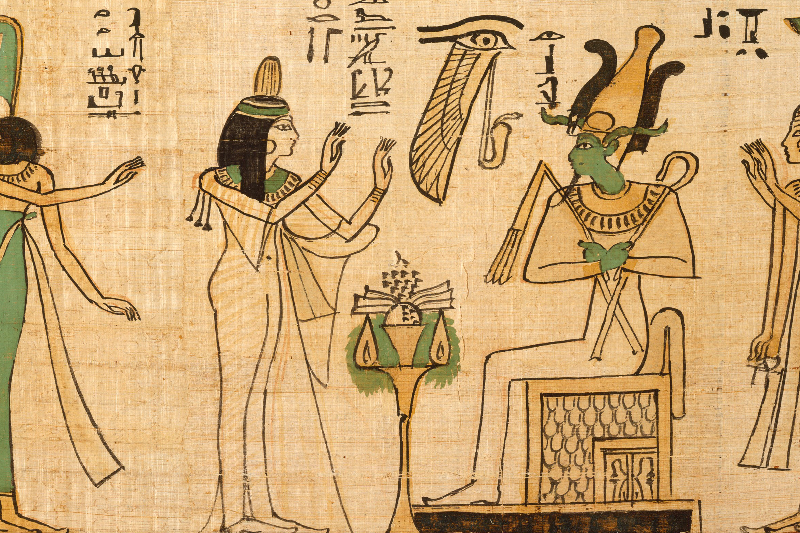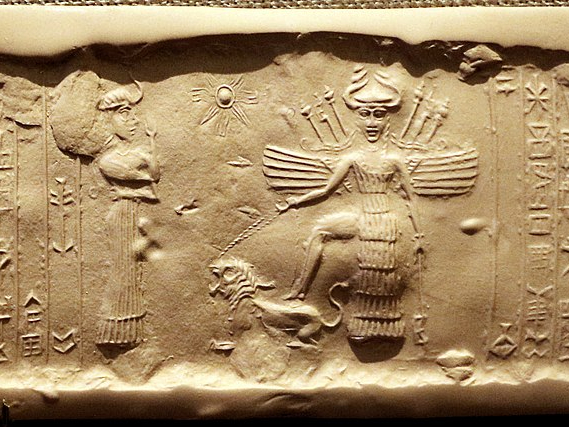Roman mythology has been studied for centuries. Often referred to as “Classical Mythology”, these mythologies have heavily influenced Western literature and culture. As a result, this is one of the best-known mythologies today. The Greek city-states had very similar mythology.
In Roman culture, gods were less often called upon and more often propitiated. Rather than ask the gods for help, the people would try to avoid the god’s notice or simply stay on the gods’ good side. Modern practitioners tend to call on the gods based on aspects of the universe that they rule over.
This list shows several of the Roman gods and goddesses.
- Bacchus: Bacchus was the Roman god of agriculture, wine, and fertility. His plants were vines and twirling ivy. He carried a pine cone-topped staff, and his followers were goat-footed Satyrs and Maenads, wild women who danced energetically during his festivals
- Ceres: Ceres is the goddess of agriculture, especially the growing of grains and cereals, fertility, and motherly relationships. She was the mother of Proserpine. Her daughter was married to Pluto, the god of the underworld. At Roman weddings, a boy carried the torch of Ceres to light the way to happiness for the couple.
- Diana: Diana is the goddess of hunting, the moon, and chastity. Cypress trees were sacred to her. Diana is a maiden goddess which means she has never married.
- Janus: Janus is the god of beginnings and ends, and so of gates, doors, doorways, and passages. He is usually depicted as having two faces since he looks to the future and to the past. As a god of transitions, he is to be remembered at births and journeys: he is concerned with traveling, trading, and shipping. It was also said that his face was split in two since a door can let you in or out. Ancient Greeks had no version of Janus.
- Juno: Juno is the wife of Jupiter and the queen of the gods. She is the goddess of marriage and childbirth. She was the patron goddess of Rome and a protector of the state. Juno overlooks weather events, especially the lunar phases. Juno had a special connection with Roman women, who would ask for her protection at times such as marriage and birth. Symbols of Juno were the crown and the peacock.
- Jupiter: God of Day and Weather, Jupiter held the destructive power of lighting but also brought beneficial rain to agricultural land and would, therefore, be a powerful symbol of the force of nature. In the Roman world, Jupiter would also overlook battles and is considered a symbol of honesty and justice. He is represented as a muscular man, often carrying a lightning bolt. His symbols were the eagle and lighting.
- Mars: He was the god of war, murder, and bloodshed. He tried many times to start wars between the gods. As such, he was one of the most important roman Gods and the embodiment of one of the two most powerful forces of the Universe: death (the other one being love).
- Mercury: Mercury is the god of trade, commerce, financial gain, messages, communication, travelers, boundaries, trickery, merchants, and thieves. Mars was represented as a strong male figure and has special significance in the history of Rome: via his union with Rhea Silvia, he gave birth to Romulus, founder of Rome, and his brother Remus – a Roman legend that connects the birth of the city directly with this powerful God.
- Minerva: Minerva is the powerful Roman goddess of knowledge. Minerva is the daughter of Jupiter and tradition has her being born, already in her armor, from his head. Minerva presided over science, arts, and manual work as a goddess of knowledge in all forms
- Neptune: Neptune is the god of water and the sea. Neptune is the god of horses and the patron god of horse racing. He is often depicted with horses, or with giant seahorses pulling his sea chariot. He is in charge of all the rivers, springs, lakes, and seas in the world.
- Pluto: Pluto is the god of the underworld. He is also the god of wealth because diamonds and other jewels come from underground. One myth about Pluto is that he took Proserpina, who was the daughter of Ceres, to the underworld to be his wife. Ceres cried and did not let plants grow on the Earth. The other gods brokered a deal: for six months, Pluto got Proserpina. While Proserpina was in the underworld, no plants could grow on Earth and it was winter. When Proserpina went back to her mother, it was summer.
- Proserpina: Proserpina or Proserpine is the goddess of springtime and the queen of the underworld. She was the daughter of Ceres.
- Trivia: Goddess of witchcraft and sorcery. As an Underworld deity and the Goddess of Crossroads, Trivia is a mysterious being. She had three aspects to herself: Maiden, Mother, and Crone. As the Maiden, she retains a youthful demeanor. As the Mother, as her title suggests, Trivia took on a more matronly and maternal air. Finally, as Crone, Trivia appears as a wise old woman. She was often depicted as a three-faced woman.
- Venus: Venus is the goddess of passionate love and beauty. Venus is usually represented as a beautiful young woman, often accompanied by Cupid, represented as a chubby baby with a bow and arrow.
- Vesta: Vesta was the virgin goddess of the hearth, home, and family in Roman mythology. She rarely appeared in art, as her presence was symbolized by the sacred fire that burned at her temple. The lack of an easy source of fire in the early Roman community placed a special premium on the ever-burning hearth fire, thus, Vesta was assured of a prominent place in both family and state worship. Her worship was observed in every household and her image was sometimes encountered in the household shrine
- Vulcan: Vulcan is the manufacturer of art, arms, iron, jewelry, and armor for various gods and heroes, including the thunderbolts of Jupiter. His smithy was believed to be underneath Mount Etna in Sicily. It was said that whenever Venus is unfaithful, Vulcan grows angry and beats the red-hot metal with such a force that sparks and smoke rise up from the top of the mountain, to create a volcanic eruption.
This page is a brief overview of some of the most popular gods and goddesses of this pantheon. If you are drawn to a particular pantheon, you should do further study of that culture and mythology. Every culture has a different view of how powerful their gods are, whether they can die, and how the gods are to be approached. You should always try to approach a god or goddess in a way similar to the culture which worships that being.
